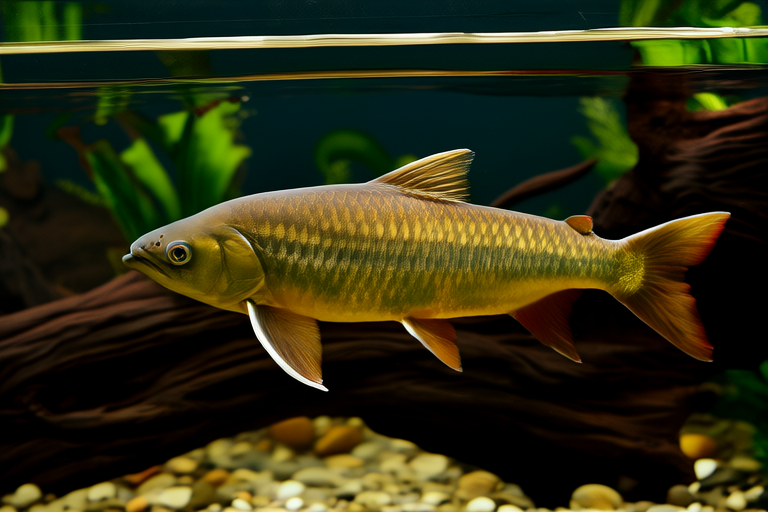The Ultimate Guide to Keeping Your Arowana Healthy and Happy
Arowanas are fascinating and majestic fish that can bring a unique charm to any aquarium. However, they require specific care to thrive. This comprehensive guide will help you understand the needs of your arowana, ensuring it remains healthy and happy.
Optimal Tank Setup
Creating an ideal living space for your arowana is crucial. Start by choosing a large tank; these fish need plenty of room to swim. A minimum size of 240 gallons is recommended for a single adult arowana. The tank should be long rather than tall, as arowanas prefer horizontal swimming. Equip the tank with a strong filtration system capable of handling the high bio-load produced by these large fish.
Substrate choice is important. Fine gravel or sand works well, but avoid sharp or large stones that could harm your fish. Decorations such as driftwood, rocks, and plants can add visual interest and provide hiding spots. Ensure there are no sharp edges on decorations that could injure your arowana. Backgrounds or walls can be added to give the tank a more natural appearance.
Proper lighting is essential. Use full-spectrum LED lights that mimic natural sunlight, allowing your arowana to feel comfortable. Install a lid with a secure locking mechanism to prevent your fish from jumping out.
Water Parameters
Maintaining the right water conditions is vital for your arowana’s health. Aim for a temperature range between 78°F and 82°F (25°C to 28°C). The pH level should be slightly acidic to neutral, around 6.5 to 7.5. Conductivity should be between 300 and 800 µS/cm. Regular testing of these parameters using reliable test kits is necessary.
Perform weekly water changes, replacing about 25% of the tank volume. This helps maintain water quality and removes harmful substances like ammonia and nitrite. Use a high-quality dechlorinator to treat tap water before adding it to the tank. Adequate filtration is key, ensuring continuous water movement and oxygenation.
Diet Requirements
Arowanas are carnivorous and require a balanced diet to stay healthy. Feed them a variety of foods, including live or frozen feeder fish, earthworms, crickets, and commercially prepared pellets designed for large carnivorous fish. Avoid feeding them too much at once; offer small meals several times a day. Ensure food items are appropriate for their size to prevent choking hazards.
Feed your arowana only what they can consume within a few minutes. Overfeeding can lead to obesity and poor water quality. Monitor your fish closely during feeding times to adjust portions accordingly. Providing a diverse diet supports their overall health and longevity.
Common Health Issues
Like all aquatic animals, arowanas are susceptible to certain health problems. Fungal infections, bacterial diseases, and parasitic infestations are common. Signs of illness include lethargy, loss of appetite, unusual spots or lesions on the body, rapid breathing, and erratic swimming behavior.
To prevent illnesses, maintain excellent water quality and quarantine new additions to the tank for several weeks. Treatments vary depending on the specific issue, so consult a veterinarian specializing in exotic pets if you suspect your fish is sick. Early intervention is crucial for successful recovery.
Tips for Maintaining a Stress-Free Environment
Creating a peaceful environment is critical for your arowana’s psychological well-being. Avoid sudden loud noises or movements near the tank. Keep the lighting consistent and avoid overstimulation. Provide hiding places where your fish can retreat when feeling threatened.
Understanding your arowana’s behavior can also help reduce stress. Arowanas are territorial and may become aggressive towards other fish, especially those of similar size or shape. Therefore, it’s best to keep them alone or with compatible species that won’t compete for resources.
Behavioral Insights
Arowanas exhibit interesting behaviors that reflect their natural habitat. They are known for their ability to leap out of the water to catch prey. In captivity, this behavior can sometimes be directed at tank lids or walls. Provide ample swimming space and consider covering the top of the tank with a mesh screen to prevent accidental injuries.
These fish are also social creatures, often interacting with their surroundings and other inhabitants. Observing their daily routines can provide insight into their mood and health. Regular interaction with your arowana can strengthen the bond between you and your pet.
Conclusion
Keeping an arowana healthy and happy requires attention to detail and commitment. By setting up an optimal tank, maintaining correct water parameters, providing a balanced diet, being vigilant about potential health issues, and creating a stress-free environment, you can ensure your arowana thrives. Remember, each fish is unique, so tailor your approach based on individual needs and preferences.
